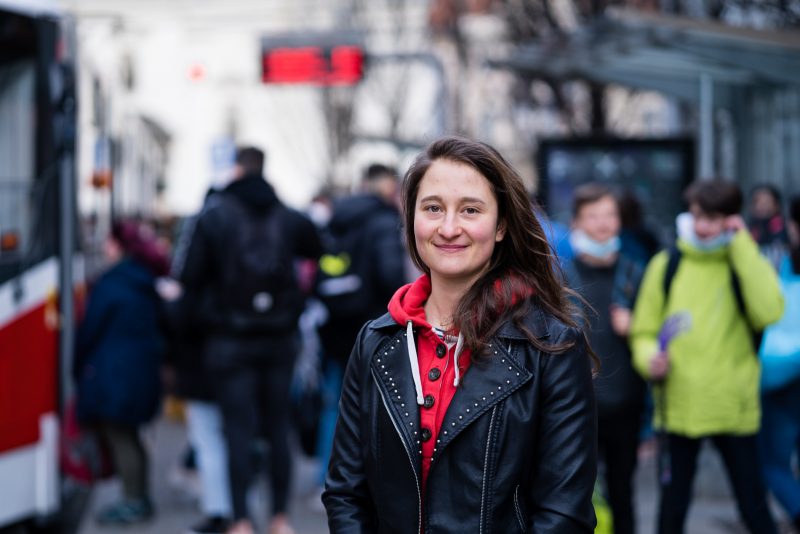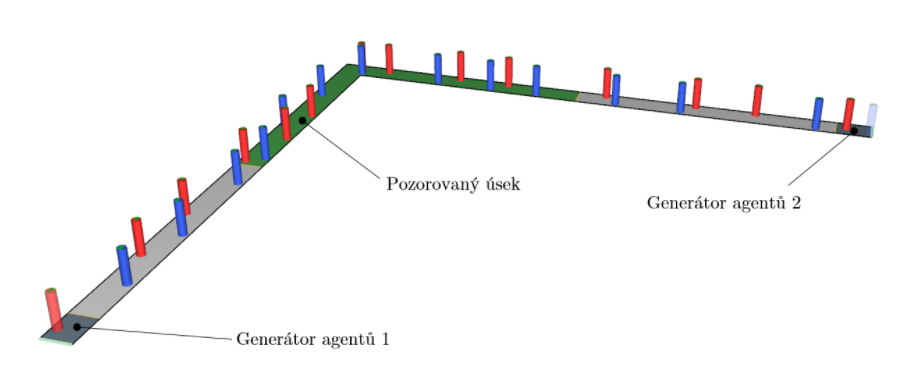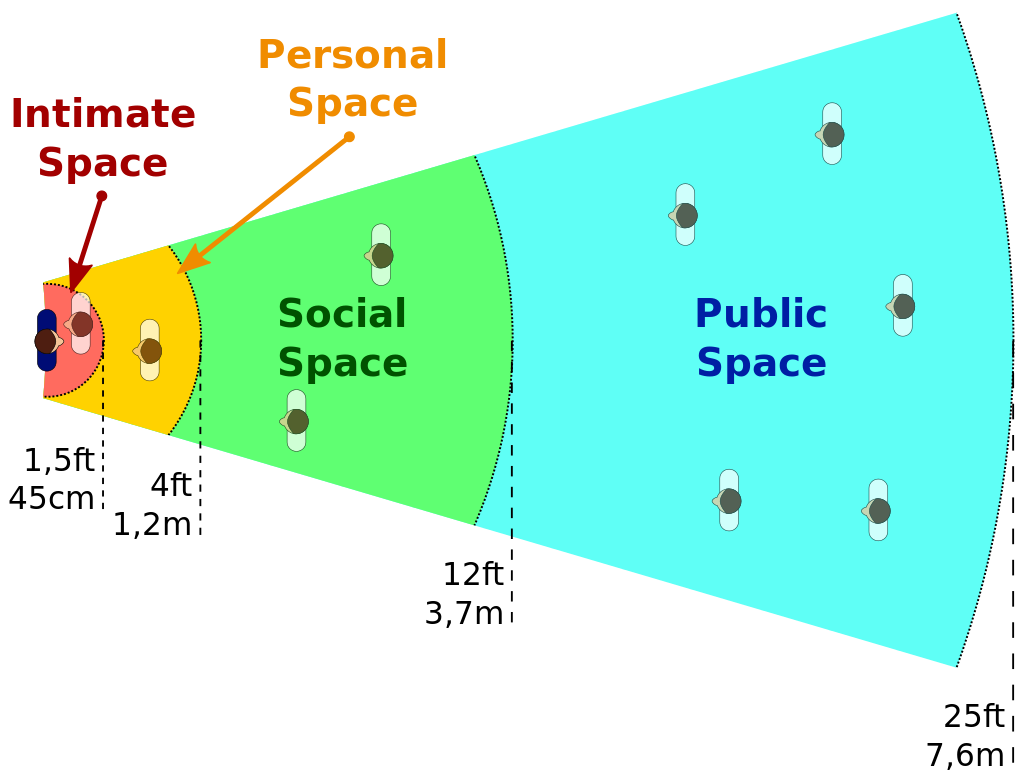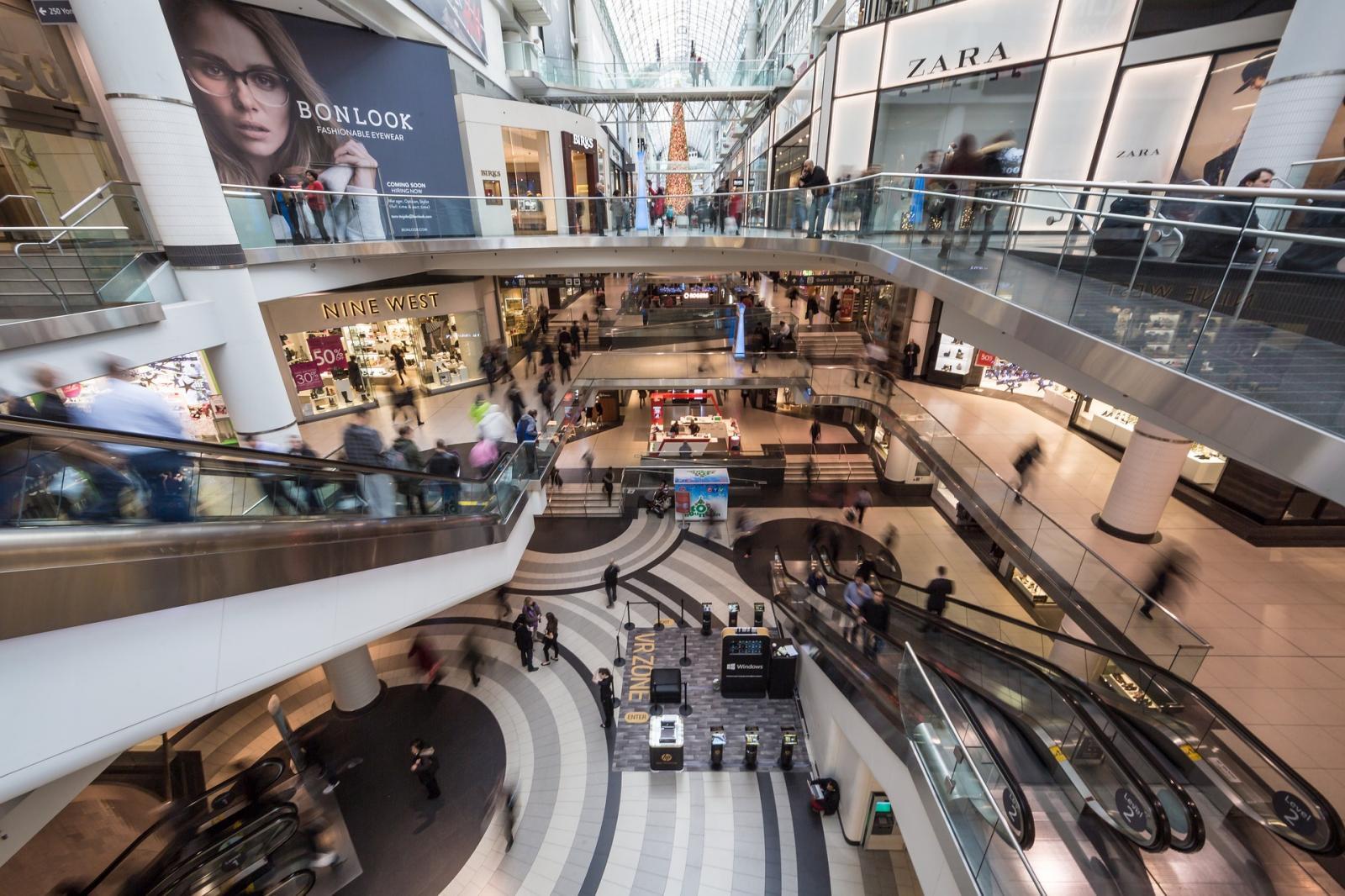Ideas and discoveries
Modern civil engineering will design pleasant shopping centres and optimal escape routes for people

Construction doesn't mean hours spent at the drawing board with a ruler anymore. As in other areas of human life, more and more professionals are turning to computers to design and build. That is also why the Faculty of Civil Engineering has its place at the Institute of Automation and Computer Science. With the help of artificial intelligence, researchers there can calculate how an office environment, for example, will affect employees well before they ever kick the ground for the first time.
In the computer simulations that are the daily bread of doctoral student Martina Pálková, coloured points move in clearly defined corridors and avoid each other. In this way, the computer program simplistically plays out a situation where, for example, a large number of people crowd into a shopping centre corridor and try to get from one side to the other. What if the siren suddenly sounds and the order to leave the building is given? “If the model is plausible enough, we can see a poorly conceived evacuation where people start to gather in one place. The building catches fire, I have a lot of people in one part and not many in another, and that's when I would need to know which way to send them out,” Martina Pálková explains.

The modelling of escape routes is part of the planning of modern buildings, where the program warns the designer in advance, for example, that the designed staircase of a football stadium is too narrow and could become clogged relatively quickly during an evacuation and make a hasty exit difficult. However, Martina Pálková and her colleagues, mainly doctoral students, focused on monitoring such situations in real time: “We use artificial neural networks. You give the computer a training set, in this case data from simulations of people's movements, on which it learns by itself. The system is then able to generalize the examples and come up with a solution even though it has never encountered the specific situation before.”
In reality, such a program could be part of the building's command centre and could itself, based on data from security cameras, for example in the event of a fire, alert which escape entrances are less occupied and which evacuation will be faster.
STRESS-FREE MALLS. UTOPIA?
Evacuations are situations that we hope will be as few as possible. That's why Pálková together with her colleagues are thinking about how to make people's everyday lives, such as a day at the office or a walk through a department store, more pleasant. “Based on the geometry of the site and the number of people, we try to predict what the comfort of the people will be like during the design process. For example, you will be designing a department store or the premises of a new company, and you know roughly how many people will be there. Thanks to our system, you will know whether it will be enough if the corridor is one metre wide or if you need to extend it,” the young doctoral student points out the advantages of using artificial intelligence.

At such a moment, the attention of the computer scientists from the Faculty of Civil Engineering is not focused on escape routes, but on whether people, for example, do not squeeze too much in the corridors and thus do not get into stressful situations. “One has around oneself a kind of imaginary circles that mark one's intimate and other zones. Their perception is different, for example, just between women and men,” Martina Pálková digresses into the humanities and admits that the longer she has been involved in the project, the more she sees the connection with other disciplines, such as psychology or sociology.
“It was interesting for us to think about how one would define comfort. We decided to define it on the basis of the density of people, which is mathematics, but we also tried to base it on our own feelings,” Pálková says, bringing the topic back to the level of hard data, which she says has its limits. “It turns out, for example, that people perceive comfort differently when noise is present. Even if you have a low density of people in a place, but there is a lot of noise, you have a completely different sense of comfort. Unfortunately, we can't cover everything.”
BUY AND GET HOME FAST
The researchers had to take into account situations that don't seem unpleasant at first glance, but people don't actually feel very relaxed. “In some situations, people are uncomfortable with other people who are ten metres away. This is what happens in shopping centres, when nobody is breathing down your neck, but the amount of people in the building is unpleasant,” Pálková points out a situation that is probably familiar to everyone when shopping, when you want to be home as soon as possible.
The result of the efforts of the experts from the Faculty of Civil Engineering is a computer program that is understandable even to designers who are not involved in computer science. They could then let the software work independently when designing new buildings and modify the project according to its calculations.
“It is still clearer that the construction industry is falling behind of digitisation and the use of artificial intelligence. But when we think about it, we see so many areas where they could be used. Building informatics has a huge potential,” Martina Pálková concludes optimistically.
(tk)
He is interested in how high-strength steel wears out. For his research, the doctoral student from FCE BUT also received a scholarship for foreign students
A scientist brings hot lava samples from Iceland to Brno
BUT experts address climate challenges, floods, and the future of Czech water
Structural engineer in Zambia: honey, fires, and house made of clay
FCE experts test energy piles to ensure structural stability and cooling of buildings